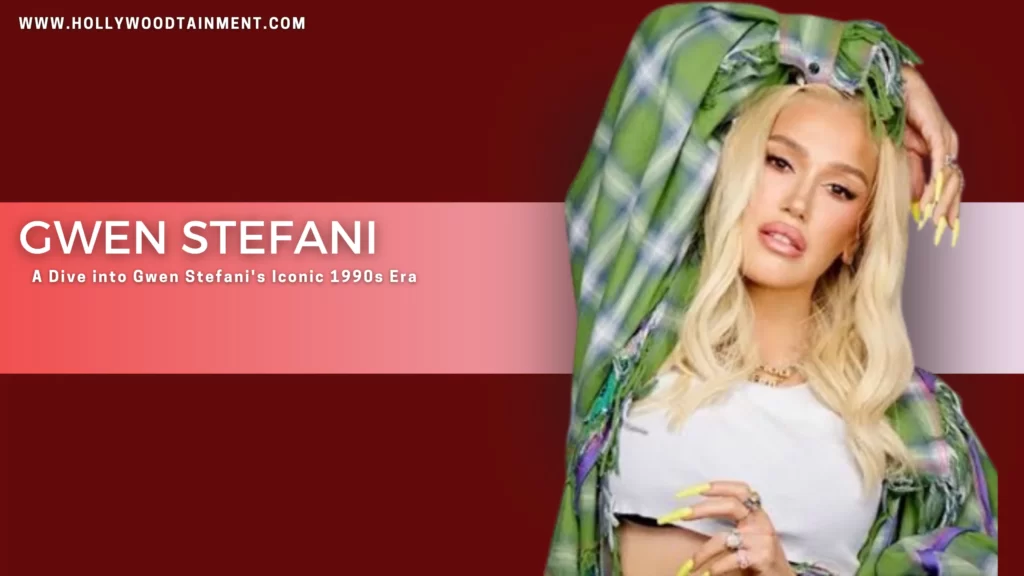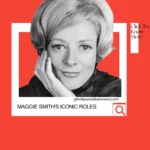Gwen Stefani evokes images of platinum blonde locks, bold red lips, and infectious energy. But before becoming an international pop phenomenon, Stefani was the fiery frontwoman for No Doubt, a band that made waves during the 90s music scene. This article examines Gwen Stefani’s 90s musical journey – her musical development, iconic songs that defined her era, as well as any lasting effects she made in the industry.
Check out Vanessa Feltz First Husband: The Mystery Of Her & Mr. Kurer or Gwen Stefani Marriages: A Love Story In Two Acts or scroll through other celebrities’ life in the Hollywood Industry.

Ska Roots and Early Success
Gwen Stefani traces her musical roots back to ska, an offbeat genre characterized by off-kilter rhythms and upbeat tempos. After joining her brother Eric’s band No Doubt as a backup vocalist in 1986, she transitioned into lead vocalist status in 1991; at first heavily influenced by ska, their early sound featured songs such as “Trapped in a Box” and “Don’t Speak”, becoming iconic songs for an entire generation struggling with teenage angst and heartbreak.
No Doubt rose to fame gradually. Their 1995 self-titled album featured “Just a Girl,” an uptempo tune displaying Stefani’s powerful vocals and charismatic stage presence. It made an impactful statement about women battling societal expectations placed upon them, appealing to young audiences while solidifying her status as a feminist icon.
Experimentation and Crossover Appeal
No Doubt’s sound began to change throughout the 1990s as they introduced pop, rock and reggae elements into their music. Their 1998 release “Tragic Kingdom,” an artistic and critical triumph which propelled them into mainstream stardom, yielded several hit singles, including “Spiderwebs,” the mellow ballad “Don’t Speak,” and the infectious pop-rock track “Sunday Morning.”
No Doubt’s heartbreaking ballad “Don’t Speak”, detailing a relationship’s breakdown, became one of the group’s enduring songs. Gwen Stefani’s raw and emotive vocals resonated strongly with listeners, making the track an instantaneous radio hit and music video classic. Tony Kanal, played by Stefani, further solidified its emotional impact and cemented its place in pop culture history.
Fashion Icon and Solo Success
Gwen Stefani had an impactful influence on more than music alone. Her fashion choices, characterized by bindis, plaid pants, and Doc Martens boots, made her a fashion icon, challenging traditional beauty standards and celebrating individualism, inspiring young women to express themselves through clothing.
Stefani embarked on her solo career in 2000 with her debut solo album “Love. Angel. Music. Baby,” representing an evolution in her sound away from No Doubt’s. The single “Hollaback Girl” became an international success and solidified Stefani’s standing as a pop icon.
Legacy and Enduring Influence
Gwen Stefani made an indelible mark on the 90s music scene, changing expectations about female vocalists while defying stereotypes to pave the way for future artists. Her songs resonate with fans today as powerful anthems for self-expression, female empowerment, and young love’s bittersweet nature.
Stefani’s impact on fashion and pop culture goes beyond music; she remains an icon for style, influencing trends and breaking boundaries with her daring and colourful aesthetic. Stefani’s journey from ska queen to pop superstar speaks volumes of her talent, versatility, and unwavering commitment to remaining herself.
some interesting facts about Gwen Stefani 1990s songs
- “Don’t Speak” was written about Gwen Stefani’s breakup with her bandmate Tony Kanal.
- “I’m Throw My Toys Around” was originally written for another band, but No Doubt ended up recording it themselves.
- “Spiderwebs” was inspired by a dream that Gwen Stefani had.
- “Hey Baby” was originally written for another song, but Gwen Stefani and her bandmates decided to turn it into a No Doubt song.
Conclusion
Gwen Stefani’s 90s music is an ever-evolving tapestry of ska, pop, rock and reggae that showcases her powerful vocals and electrifying stage presence. Her songs remain timeless classics, while her influence on fashion, pop culture and pop music continues to inspire and empower generations of fans today. She stands as an inspirational icon representing music’s ability to empower individuality, challenge norms and leave lasting ripples through culture – she is an iconic representation of this fact!
What are Gwen Stefani’s most popular 1990s songs?
Don’t Speak, Just a Girl, I’m Throw My Toys Around, Spiderwebs, and Hey Baby.
What was Gwen Stefani’s musical style in the 1990s?
Gwen Stefani’s musical style in the 1990s was primarily ska-punk, with influences from pop, reggae, and rock. No Doubt’s early albums, such as “Tragic Kingdom” and “The Beacon Street Collection,” are considered classics of the genre.
What was Gwen Stefani’s image like in the 1990s?
Gwen Stefani’s image in the 1990s was iconic and trendsetting. She was known for her bold fashion choices, such as her bindis, brightly colored hair, and platform boots. She was also a role model for young women, with her strong voice and confident attitude.







